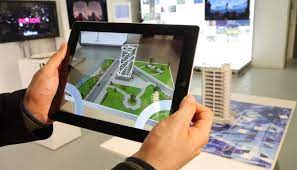What Is Machine Learning: Definition and Examples
Commonly known as linear regression, this method provides training data to help systems with predicting and forecasting. Classification is used to train systems on identifying an object and placing it in a sub-category. For instance, email filters use machine learning to automate incoming email flows for primary, promotion and spam inboxes.
Inductive logic programming (ILP) is an approach to rule learning using logic programming as a uniform representation for input examples, background knowledge, and hypotheses. Given an encoding of the known background knowledge and a set of examples represented as a logical database of facts, an ILP system will derive a hypothesized logic program that entails all positive and no negative examples. Inductive programming is a related field that considers any kind of programming language for representing hypotheses (and not only logic programming), such as functional programs. Chat PG Similarity learning is an area of supervised machine learning closely related to regression and classification, but the goal is to learn from examples using a similarity function that measures how similar or related two objects are. It has applications in ranking, recommendation systems, visual identity tracking, face verification, and speaker verification. This machine learning tutorial helps you gain a solid introduction to the fundamentals of machine learning and explore a wide range of techniques, including supervised, unsupervised, and reinforcement learning.
Data is any type of information that can serve as input for a computer, while an algorithm is the mathematical or computational process that the computer follows to process the data, learn, and create the machine learning model. In other words, data and algorithms combined through training make up the machine learning model. While this topic garners a lot of public attention, many researchers are not concerned with the idea of AI surpassing human intelligence in the near future.
Bayesian networks that model sequences of variables, like speech signals or protein sequences, are called dynamic Bayesian networks. Generalizations of Bayesian networks that can represent and solve decision problems under uncertainty are called influence diagrams. Robot learning is inspired by a multitude of machine learning methods, starting from supervised learning, reinforcement learning,[74][75] and finally meta-learning (e.g. MAML). Moreover, data mining methods help cyber-surveillance systems zero in on warning signs of fraudulent activities, subsequently neutralizing them. Several financial institutes have already partnered with tech companies to leverage the benefits of machine learning. Industry verticals handling large amounts of data have realized the significance and value of machine learning technology.
The method learns from previous test data that hasn’t been labeled or categorized and will then group the raw data based on commonalities (or lack thereof). Cluster analysis uses unsupervised learning to sort through giant lakes of raw data to group certain data points together. Clustering is a popular tool for data mining, and it is used in everything from genetic research to creating virtual social media communities with like-minded individuals. For example, a linear regression algorithm is primarily used in supervised learning for predictive modeling, such as predicting house prices or estimating the amount of rainfall.
This technique allows reconstruction of the inputs coming from the unknown data-generating distribution, while not being necessarily faithful to configurations that are implausible under that distribution. This replaces manual feature engineering, and allows a machine to both learn the features and use them to perform a specific task. Neural networks are a commonly used, specific class of machine learning algorithms. Artificial neural networks are modeled on the human brain, in which thousands or millions of processing nodes are interconnected and organized into layers. Deep learning is a subfield of ML that deals specifically with neural networks containing multiple levels — i.e., deep neural networks.
Together, ML and symbolic AI form hybrid AI, an approach that helps AI understand language, not just data. With more insight into what was learned and why, this powerful approach is transforming how data is used across the enterprise. For example, a computer may be given the task of identifying photos of cats and photos of trucks. For humans, this is a simple task, but if we had to make an exhaustive list of all the different characteristics of cats and trucks so that a computer could recognize them, it would be very hard. Similarly, if we had to trace all the mental steps we take to complete this task, it would also be difficult (this is an automatic process for adults, so we would likely miss some step or piece of information).
Similar to how the human brain gains knowledge and understanding, machine learning relies on input, such as training data or knowledge graphs, to understand entities, domains and the connections between them. Reinforcement machine learning is a machine learning model that is similar to supervised learning, but the algorithm isn’t trained using sample data. A sequence of successful outcomes will be reinforced to develop the best recommendation or policy for a given problem. Deep learning and neural networks are credited with accelerating progress in areas such as computer vision, natural language processing, and speech recognition.
In the field of NLP, improved algorithms and infrastructure will give rise to more fluent conversational AI, more versatile ML models capable of adapting to new tasks and customized language models fine-tuned to business needs. The work here encompasses confusion matrix calculations, business key performance indicators, machine learning metrics, model quality measurements and determining whether the model can meet business goals. Determine what data is necessary to build the model and whether it’s in shape for model ingestion.
The regularization term used in the previous equations is called L2, or ridge regularization. In the above equation, we are updating the model parameters after each iteration. The second term of the equation calculates the slope or gradient of the curve at each iteration. The mean is halved as a convenience for the computation of the gradient descent, as the derivative term of the square function will cancel out the half term. Alan Turing’s seminal paper introduced a benchmark standard for demonstrating machine intelligence, such that a machine has to be intelligent and responsive in a manner that cannot be differentiated from that of a human being. Google’s AI algorithm AlphaGo specializes in the complex Chinese board game Go.
Much like how a child learns, the algorithm slowly begins to acquire an understanding of its environment and begins to optimize actions to achieve particular outcomes. For instance, an algorithm may be optimized by playing successive games of chess, which allows it to learn from its past successes and failures playing each game. The University of London’s Machine Learning for All course will introduce you to the basics of how machine learning works and guide you through training a machine learning model with a data set on a non-programming-based platform.
It completed the task, but not in the way the programmers intended or would find useful. Machine learning can analyze images for different information, like learning to identify people and tell them apart — though facial recognition algorithms are controversial. Shulman noted that hedge funds famously use machine learning to analyze the number of cars in parking lots, which helps them learn how companies are performing and make good bets. Machine learning is a subfield of artificial intelligence, which is broadly defined as the capability of a machine to imitate intelligent human behavior. Artificial intelligence systems are used to perform complex tasks in a way that is similar to how humans solve problems.
A crucial distinction is that, while all machine learning is AI, not all AI is machine learning. Generative adversarial networks are an essential machine learning breakthrough in recent times. It enables the generation of valuable data from scratch or random noise, generally images or music. Simply put, rather than training a single neural network with millions of data points, we could allow two neural networks to contest with each other and figure out the best possible path.
A 12-month program focused on applying the tools of modern data science, optimization and machine learning to solve real-world business problems. Amid the enthusiasm, companies will face many of the same challenges presented by previous cutting-edge, fast-evolving technologies. New challenges include adapting legacy infrastructure to machine learning systems, mitigating ML bias and figuring out how to best use these awesome new powers of AI to generate profits for enterprises, in spite definition of ml of the costs. Machine learning projects are typically driven by data scientists, who command high salaries. Machine learning is a pathway to artificial intelligence, which in turn fuels advancements in ML that likewise improve AI and progressively blur the boundaries between machine intelligence and human intellect. As you’re exploring machine learning, you’ll likely come across the term “deep learning.” Although the two terms are interrelated, they’re also distinct from one another.
Model assessments
A device is made to predict the outcome using the test dataset in subsequent phases. Computer scientists at Google’s X lab design an artificial brain featuring a neural network of 16,000 computer processors. The network applies a machine learning algorithm to scan YouTube videos on its own, picking out the ones that contain content related to cats. Deep learning is a subfield within machine learning, and it’s gaining traction for its ability to extract features from data. Deep learning uses Artificial Neural Networks (ANNs) to extract higher-level features from raw data.
Machine learning is an application of AI that enables systems to learn and improve from experience without being explicitly programmed. Machine learning focuses on developing computer programs that can access data and use it to learn for themselves. You can foun additiona information about ai customer service and artificial intelligence and NLP. Since there isn’t significant legislation to regulate AI practices, there is no real enforcement mechanism to ensure that ethical AI is practiced. The current incentives for companies to be ethical are the negative repercussions of an unethical AI system on the bottom line. To fill the gap, ethical frameworks have emerged as part of a collaboration between ethicists and researchers to govern the construction and distribution of AI models within society.
Some research (link resides outside ibm.com) shows that the combination of distributed responsibility and a lack of foresight into potential consequences aren’t conducive to preventing harm to society. For example, the wake-up command of a smartphone such as ‘Hey Siri’ or ‘Hey Google’ falls under tinyML. Wearable devices will be able to analyze health data in real-time and provide personalized diagnosis and treatment specific to an individual’s needs.
Bias and discrimination aren’t limited to the human resources function either; they can be found in a number of applications from facial recognition software to social media algorithms. For example, when you search for a location on a search engine or Google maps, the ‘Get Directions’ option automatically pops up. This tells you the exact route to your desired destination, saving precious time. If such trends continue, eventually, machine learning will be able to offer a fully automated experience for customers that are on the lookout for products and services from businesses. For example, banks such as Barclays and HSBC work on blockchain-driven projects that offer interest-free loans to customers. Also, banks employ machine learning to determine the credit scores of potential borrowers based on their spending patterns.
Machine learning refers to the general use of algorithms and data to create autonomous or semi-autonomous machines. Deep learning, meanwhile, is a subset of machine learning that layers algorithms into “neural networks” that somewhat resemble the human brain so that machines can perform increasingly complex tasks. In common usage, the terms “machine learning” and “artificial intelligence” are often used interchangeably with one another due to the prevalence of machine learning for AI purposes in the world today. While AI refers to the general attempt to create machines capable of human-like cognitive abilities, machine learning specifically refers to the use of algorithms and data sets to do so.
As computer algorithms become increasingly intelligent, we can anticipate an upward trajectory of machine learning in 2022 and beyond. Machine learning has significantly impacted all industry verticals worldwide, from startups to Fortune 500 companies. According to a 2021 report by Fortune Business Insights, the global machine learning market size was $15.50 billion in 2021 and is projected to grow to a whopping $152.24 billion by 2028 at a CAGR of 38.6%. Similarly, LinkedIn knows when you should apply for your next role, whom you need to connect with, and how your skills rank compared to peers. Machine learning is being increasingly adopted in the healthcare industry, credit to wearable devices and sensors such as wearable fitness trackers, smart health watches, etc. All such devices monitor users’ health data to assess their health in real-time.
Machine learning teaches machines to learn from data and improve incrementally without being explicitly programmed. Here X is a vector or features of an example, W are the weights or vector of parameters that determine how each feature affects the prediction, and b is a bias term. This article introduces the basics of machine learning theory, laying down the common concepts and techniques involved. This post is intended for people starting with machine learning, making it easy to follow the core concepts and get comfortable with machine learning basics.
Artificial neural networks (ANNs), or connectionist systems, are computing systems vaguely inspired by the biological neural networks that constitute animal brains. Such systems “learn” to perform tasks by considering examples, generally without being programmed with any task-specific rules. A core objective of a learner is to generalize from its experience.[6][43] Generalization in this context is the ability of a learning machine to perform accurately on new, unseen examples/tasks after having experienced a learning data set. This type of ML involves supervision, where machines are trained on labeled datasets and enabled to predict outputs based on the provided training. The labeled dataset specifies that some input and output parameters are already mapped.
Data Structures and Algorithms
Reinforcement learning is another type of machine learning that can be used to improve recommendation-based systems. In reinforcement learning, an agent learns to make decisions based on feedback from its environment, and this feedback can be used to improve the recommendations provided to users. For example, the system could track how often a user watches a recommended movie and use this feedback to adjust the recommendations in the future. Scientists focus less on knowledge and more on data, building computers that can glean insights from larger data sets. Algorithms then analyze this data, searching for patterns and trends that allow them to make accurate predictions.
We rely on our personal knowledge banks to connect the dots and immediately recognize a person based on their face. Watch a discussion with two AI experts about machine learning strides and limitations. Through intellectual rigor and experiential learning, this full-time, two-year MBA program develops leaders who make a difference in the world.
AI vs. Machine Learning vs. Deep Learning vs. Neural Networks: What’s the difference? – IBM
AI vs. Machine Learning vs. Deep Learning vs. Neural Networks: What’s the difference?.
Posted: Thu, 06 Jul 2023 07:00:00 GMT [source]
Many of the algorithms and techniques aren’t limited to just one of the primary ML types listed here. They’re often adapted to multiple types, depending on the problem to be solved and the data set. For instance, deep learning algorithms such as convolutional neural networks and recurrent neural networks are used in supervised, unsupervised and reinforcement learning tasks, based on the specific problem and availability of data. While machine learning is a powerful tool for solving problems, improving business operations and automating tasks, it’s also a complex and challenging technology, requiring deep expertise and significant resources.
Unsupervised Learning: Faster Analysis of Complex Data
Support-vector machines (SVMs), also known as support-vector networks, are a set of related supervised learning methods used for classification and regression. In addition to performing linear classification, SVMs can efficiently perform a non-linear classification using what is called the kernel trick, implicitly mapping their inputs into high-dimensional feature spaces. Like all systems with AI, machine learning needs different methods to establish parameters, actions and end values.
Uber uses a machine learning model called ‘Geosurge’ to manage dynamic pricing parameters. It uses real-time predictive modeling on traffic patterns, supply, and demand. If you are getting late for a meeting and need to book an Uber in a crowded area, the dynamic pricing model kicks in, and you can get an Uber ride immediately but would need to pay twice the regular fare. Machine learning (ML) is a discipline of artificial intelligence (AI) that provides machines with the ability to automatically learn from data and past experiences while identifying patterns to make predictions with minimal human intervention. We try to make the machine learning algorithm fit the input data by increasing or decreasing the model’s capacity. In linear regression problems, we increase or decrease the degree of the polynomials.
Set and adjust hyperparameters, train and validate the model, and then optimize it. Depending on the nature of the business problem, machine learning algorithms can incorporate natural language understanding capabilities, such as recurrent neural networks or transformers that are designed for NLP tasks. Additionally, boosting algorithms can be used to optimize decision tree models. Semisupervised learning works by feeding a small amount of labeled training data to an algorithm.
Machine learning algorithms and machine vision are a critical component of self-driving cars, helping them navigate the roads safely. In healthcare, machine learning is used to diagnose and suggest treatment plans. Other common ML use cases include fraud detection, spam filtering, malware threat detection, predictive maintenance and business process automation.
Supervised learning, also known as supervised machine learning, is defined by its use of labeled datasets to train algorithms to classify data or predict outcomes accurately. As input data is fed into the model, the model adjusts its weights until it has been fitted appropriately. This occurs as part of the cross validation process to ensure that the model avoids overfitting or underfitting. Supervised learning helps organizations solve a variety of real-world problems at scale, such as classifying spam in a separate folder from your inbox. Some methods used in supervised learning include neural networks, naïve bayes, linear regression, logistic regression, random forest, and support vector machine (SVM).

Machine learning starts with data — numbers, photos, or text, like bank transactions, pictures of people or even bakery items, repair records, time series data from sensors, or sales reports. The data is gathered and prepared to be used as training data, or the information the machine learning model will be trained on. Reinforcement learning uses trial and error to train algorithms and create models. During the training process, algorithms operate in specific environments and then are provided with feedback following each outcome.
However, real-world data such as images, video, and sensory data has not yielded attempts to algorithmically define specific features. An alternative is to discover such features or representations through examination, without relying on explicit algorithms. Although not all machine learning is statistically based, computational statistics is an important source of the field’s methods. Machine learning (ML) is a subdomain of artificial intelligence (AI) that focuses on developing systems that learn—or improve performance—based on the data they ingest. Artificial intelligence is a broad word that refers to systems or machines that resemble human intelligence. Machine learning and AI are frequently discussed together, and the terms are occasionally used interchangeably, although they do not signify the same thing.
Advantages & limitations of machine learning
Machine learning (ML) is a branch of artificial intelligence (AI) and computer science that focuses on the using data and algorithms to enable AI to imitate the way that humans learn, gradually improving its accuracy. For example, consider an excel spreadsheet with multiple financial data entries. Here, the ML system will use deep learning-based programming to understand what numbers are good and bad data based on previous examples. Unlike supervised learning, reinforcement learning lacks labeled data, and the agents learn via experiences only. Here, the game specifies the environment, and each move of the reinforcement agent defines its state. The agent is entitled to receive feedback via punishment and rewards, thereby affecting the overall game score.
In supervised learning the machine experiences the examples along with the labels or targets for each example. Recommender systems are a common application of machine learning, and they use historical data to provide personalized recommendations to users. In the case of Netflix, the system uses a combination of collaborative filtering and content-based filtering to recommend movies and TV shows to users based on their viewing history, ratings, and other factors such as genre preferences. Composed of a deep network of millions of data points, DeepFace leverages 3D face modeling to recognize faces in images in a way very similar to that of humans.
Retailers use ML techniques to capture data, analyze it, and deliver personalized shopping experiences to their customers. They also implement ML for marketing campaigns, customer insights, customer merchandise planning, and price optimization. To address these issues, companies like Genentech have collaborated with GNS Healthcare to leverage machine learning and simulation AI platforms, innovating biomedical treatments to address these issues. ML technology looks for patients’ response markers by analyzing individual genes, which provides targeted therapies to patients.
The training of machines to learn from data and improve over time has enabled organizations to automate routine tasks that were previously done by humans — in principle, freeing us up for more creative and strategic work. Semi-supervised machine learning is often employed to train algorithms for classification and prediction purposes in the event that large volumes of labeled data is unavailable. Supervised machine learning is often used to create machine learning models used for prediction and classification purposes. Several different types of machine learning power the many different digital goods and services we use every day.
DBSCAN Clustering Algorithm Demystified
These ML systems are “supervised” in the sense that a human gives the ML system
data with the known correct results. The term “machine learning” was coined by Arthur Samuel, a computer scientist at IBM and a pioneer in AI and computer gaming. The more the program played, the more it learned from experience, using algorithms to make predictions.
Unsupervised learning
models make predictions by being given data that does not contain any correct
answers. An unsupervised learning model’s goal is to identify meaningful
patterns among the data. In other words, the model has no hints on how to
categorize each piece of data, but instead it must infer its own rules. Consider Uber’s machine learning algorithm that handles the dynamic pricing of their rides.
What’s gimmicky for one company is core to another, and businesses should avoid trends and find business use cases that work for them. Reinforcement learning is often used to create algorithms that must effectively make sequences of decisions or actions to achieve their aims, such as playing a game or summarizing an entire text. To help you get a better idea of how these types differ from one another, here’s an overview of the four different types of machine learning primarily in use today.
Many companies are deploying online chatbots, in which customers or clients don’t speak to humans, but instead interact with a machine. These algorithms use machine learning and natural language processing, with the bots learning from records of past conversations to come up with appropriate responses. Some data is held out from the training data to be used as evaluation data, which tests how accurate the machine learning model is when it is shown new data. The result is a model that can be used in the future with different sets of data. Machine learning has played a progressively central role in human society since its beginnings in the mid-20th century, when AI pioneers like Walter Pitts, Warren McCulloch, Alan Turing and John von Neumann laid the groundwork for computation.
Alan Turing jumpstarts the debate around whether computers possess artificial intelligence in what is known today as the Turing Test. The test consists of three terminals — a computer-operated one and two human-operated ones. The goal is for the computer to trick a human interviewer into thinking it is also human by mimicking human responses to questions. Machine learning has been a field decades in the making, as scientists and professionals have sought to instill human-based learning methods in technology. The retail industry relies on machine learning for its ability to optimize sales and gather data on individualized shopping preferences.
Reinforcement learning is used to train robots to perform tasks, like walking
around a room, and software programs like
AlphaGo
to play the game of Go. ML offers a new way to solve problems, answer complex questions, and create new
content. ML can predict the weather, estimate travel times, recommend
songs, auto-complete sentences, summarize articles, and generate
never-seen-before images. It is already widely used by businesses across all sectors to advance innovation and increase process efficiency. In 2021, 41% of companies accelerated their rollout of AI as a result of the pandemic. These newcomers are joining the 31% of companies that already have AI in production or are actively piloting AI technologies.
From this data, the algorithm learns the dimensions of the data set, which it can then apply to new unlabeled data. The performance of algorithms typically improves when they train on labeled data sets. This type of machine learning strikes a balance between the superior performance of supervised learning and the efficiency of unsupervised learning. The type of algorithm data scientists choose depends on the nature of the data.
Every industry vertical in this fast-paced digital world, benefits immensely from machine learning tech. When the model has fewer features, it isn’t able to learn from the data very well. A more popular way of measuring model performance is using Mean squared error (MSE). This is the average of squared differences between prediction and actual observation.
Semi-supervised learning can solve the problem of not having enough labeled data for a supervised learning algorithm. Typically, machine learning models require a high quantity of reliable data in order for the models to perform accurate predictions. When training a machine learning model, machine learning engineers need to target and collect a large and representative sample of data.
Developing the right machine learning model to solve a problem can be complex. It requires diligence, experimentation and creativity, as detailed in a seven-step plan on how to build an ML model, a summary of which follows. In this article, you’ll learn more about what machine learning is, including how it works, different types of it, and how it’s actually used in the real world. We’ll take a look at the benefits and dangers that machine learning poses, and in the end, you’ll find some cost-effective, flexible courses that can help you learn even more about machine learning.
Most of the dimensionality reduction techniques can be considered as either feature elimination or extraction. One of the popular methods of dimensionality reduction is principal component analysis (PCA). PCA involves changing higher-dimensional data (e.g., 3D) to a smaller space (e.g., 2D). Semi-supervised learning falls between unsupervised learning (without any labeled training data) and supervised learning (with completely labeled training data). Semi-supervised learning comprises characteristics of both supervised and unsupervised machine learning. It uses the combination of labeled and unlabeled datasets to train its algorithms.
- The goal of reinforcement learning is to learn a policy, which is a mapping from states to actions, that maximizes the expected cumulative reward over time.
- The goal is to convert the group’s knowledge of the business problem and project objectives into a suitable problem definition for machine learning.
- The advantage of keeping a test set that the model hasn’t seen before during the training and model selection steps is to avoid overfitting the model.
- The gradient of the cost function is calculated as a partial derivative of cost function J with respect to each model parameter wj, where j takes the value of number of features [1 to n].
Classical, or “non-deep,” machine learning is more dependent on human intervention to learn. Human experts determine the set of features to understand the differences between data inputs, usually requiring more structured data to learn. Semi-supervised anomaly detection techniques construct a model representing normal behavior from a given normal training data set and then test the likelihood of a test instance to be generated by the model. Firstly, the request sends data to the server, processed by a machine learning algorithm, before receiving a response.
Machine learning-enabled programs come in various types that explore different options and evaluate different factors. There is a range of machine learning types that vary based on several factors like data size and diversity. Below are a few of the most common types of machine learning under which popular machine learning algorithms can be categorized. In supervised machine learning, algorithms are trained on labeled data sets that include tags describing each piece of data. In other words, the algorithms are fed data that includes an “answer key” describing how the data should be interpreted. For example, an algorithm may be fed images of flowers that include tags for each flower type so that it will be able to identify the flower better again when fed a new photograph.
- Medical professionals, equipped with machine learning computer systems, have the ability to easily view patient medical records without having to dig through files or have chains of communication with other areas of the hospital.
- Two of the most common supervised machine learning tasks are classification and regression.
- Computers can learn, memorize, and generate accurate outputs with machine learning.
- While this topic garners a lot of public attention, many researchers are not concerned with the idea of AI surpassing human intelligence in the near future.
Decision trees where the target variable can take continuous values (typically real numbers) are called regression trees. In decision analysis, a decision tree can be used to visually and explicitly represent decisions and decision making. In data mining, a decision tree describes data, but the resulting classification tree can be an input for decision-making. Unsupervised learning is a type of machine learning where the algorithm learns to recognize patterns in data without being explicitly trained using labeled examples. The goal of unsupervised learning is to discover the underlying structure or distribution in the data. Explaining how a specific ML model works can be challenging when the model is complex.
In regression, the machine predicts the value of a continuous response variable. Common examples include predicting sales of a new product or a salary for a job based on its description. The brief timeline below tracks the development of machine learning from its beginnings in the 1950s to its maturation during the twenty-first century. Instead of typing in queries, customers can now upload an image to show the computer exactly what they’re looking for. Machine learning will analyze the image (using layering) and will produce search results based on its findings.
Machine learning is a subfield of artificial intelligence in which systems have the ability to “learn” through data, statistics and trial and error in order to optimize processes and innovate at quicker rates. Machine learning gives computers the ability to develop human-like learning capabilities, which allows them to solve some of the world’s toughest problems, ranging from cancer research to https://chat.openai.com/ climate change. Algorithms trained on data sets that exclude certain populations or contain errors can lead to inaccurate models of the world that, at best, fail and, at worst, are discriminatory. When an enterprise bases core business processes on biased models, it can suffer regulatory and reputational harm. Machine learning algorithms are trained to find relationships and patterns in data.







